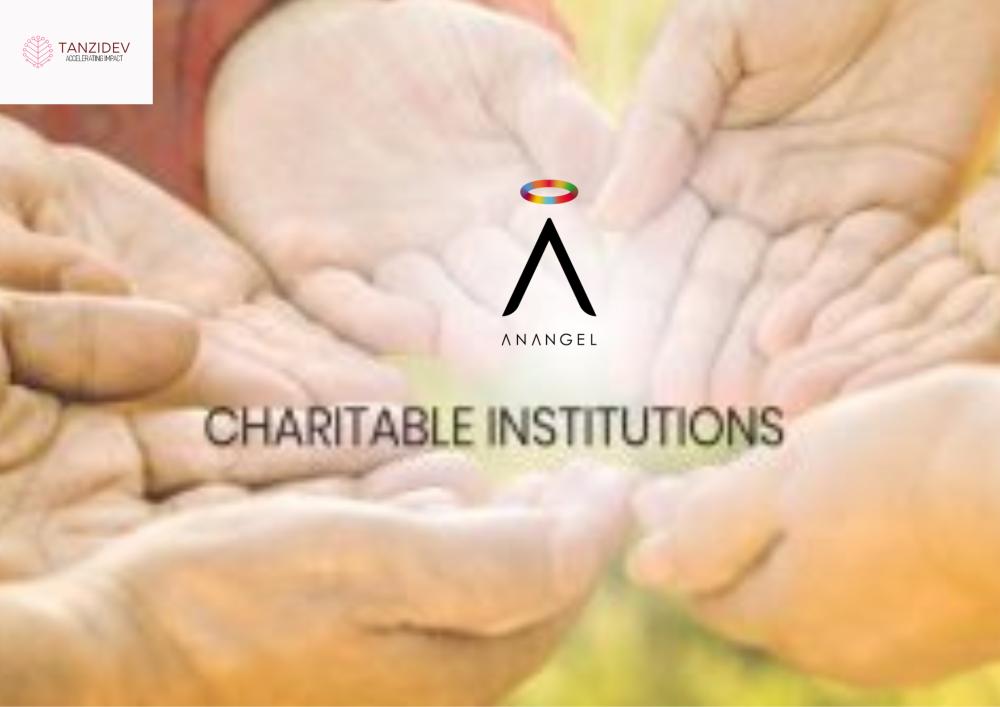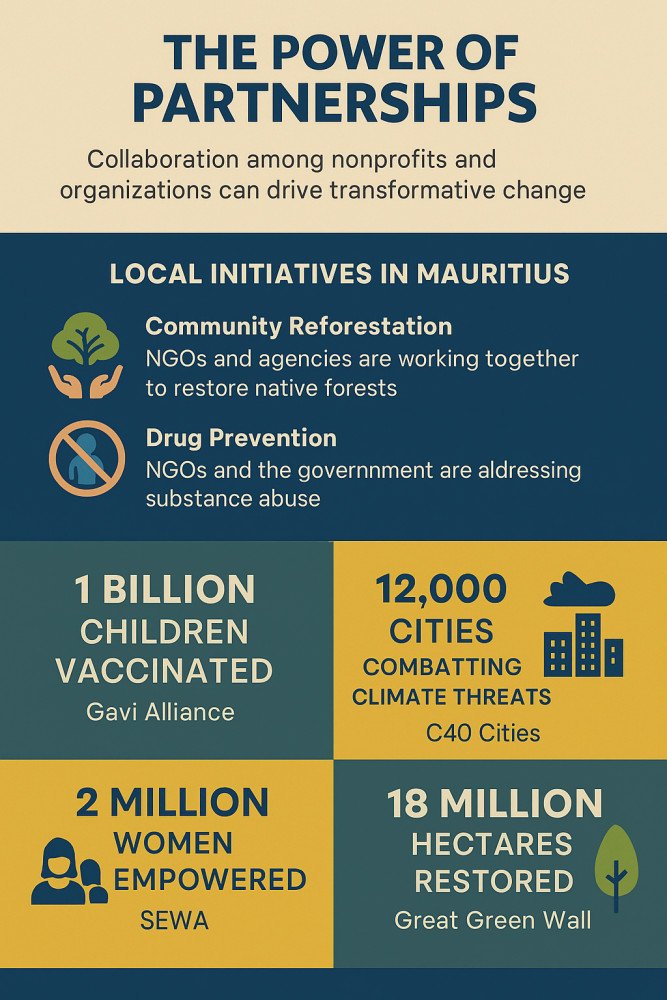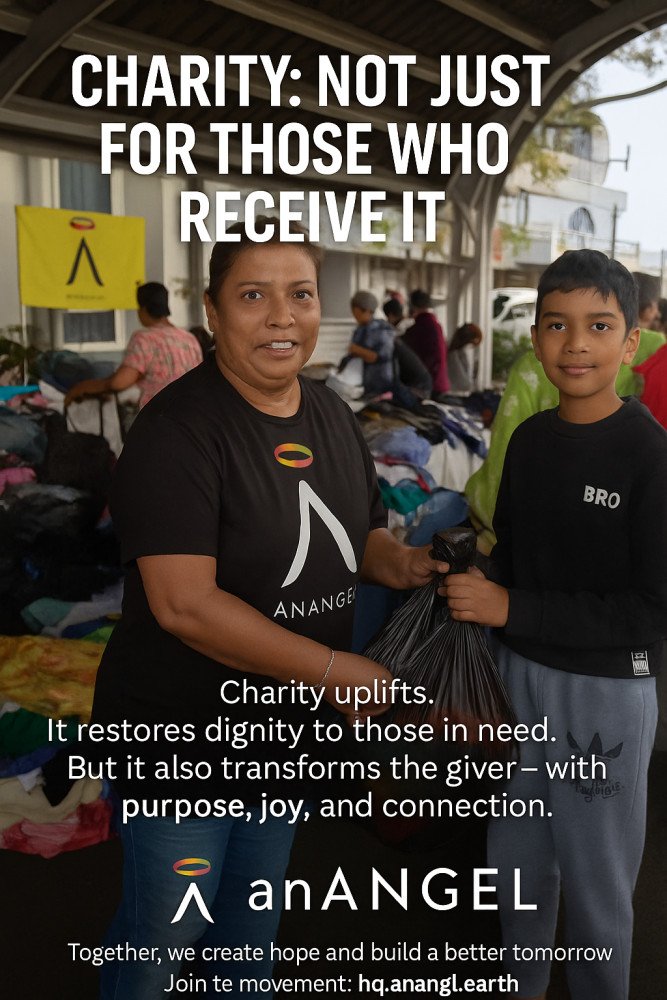

The Power of Partnership: Why Collaboration Matters for NGOs and Every Organisation
In a world where challenges are bigger, faster, and more complex than ever—climate change, social inequality, youth unemployment, elder care—no single organisation can carry the burden alone. The future belongs to those who collaborate. Partnerships are no longer just a strategy; they are the lifeline of sustainable impact.
Why We Can’t Afford to Work Alone
Think of an NGO working tirelessly in one region, a business investing in CSR projects, or a ministry rolling out policies. Each is doing important work, but too often in isolation. The result? Gaps, duplication, and missed opportunities.
Now imagine these forces joining hands: the NGO bringing trust and local insight, the business offering resources and innovation, the government enabling with policies and infrastructure, academia adding knowledge and evidence, and citizens contributing energy and lived experience. Suddenly, the puzzle pieces fit. Efforts become bigger, smarter, and longer‑lasting.
This is the promise of partnership: turning scattered efforts into collective power.
What True Collaboration Looks Like
Real partnerships go beyond signing an MoU or putting logos side by side. They are built on:
A Shared Mission – one clear goal everyone is committed to.
Complementary Strengths – each partner bringing their unique value.
Openness and Trust – honest conversations, transparent budgets, fair decision‑making.
Learning Together – celebrating successes and openly fixing what doesn’t work.
Community at the Centre – ensuring those affected are not just consulted, but co‑designing the solutions.
Partnership is a journey: first we coordinate (align efforts), then we collaborate (share resources), and finally we co‑create (innovate together).
Why It Matters for Everyone
For NGOs: partnerships unlock funding, venues, transport, credibility, and new skills. They help NGOs move from surviving project‑to‑project to creating lasting change.
For Businesses: collaboration delivers authentic CSR and ESG impact, strengthens reputation, and inspires employees through volunteering and purpose‑driven projects.
For Government & Academia: it provides faster feedback loops, cost‑effective solutions, and real‑world data that shapes better policy and research.
The truth? Everyone gains when we work together.
From Vision to Action
How do we make this real? Start simple:
Map the landscape – know who’s already active and where the gaps are.
Define the exchange – be clear on what you can offer and what you need.
Set 3–5 outcomes – focus on impact, not activity.
Keep governance light – roles and communication must be clear, but not bureaucratic.
Pilot and grow – test small, learn fast, scale what works.
Partnership is not about perfection; it’s about progress, together.
Case Studies That Inspire
1. Restoring Forests in Mauritius
NGOs, forestry services, schools, and companies plant endemic trees. Businesses sponsor logistics, councils offer land, and volunteers care for the saplings. In 2024 alone, over 2,000 endemic plants were introduced in the Grand Bassin and Petrin regions, with a survival rate above 70%. This success is possible because every stakeholder shares responsibility.
2. Protecting Elders in Rural Communities
Community NGOs host awareness sessions. Police, lawyers, and banks bring expertise. Companies sponsor meals, and media amplify stories. Hundreds of elders have been reached through the “Gran Dimoune Konn to Drwa” campaign, with participants reporting greater confidence in standing up for their rights.
3. Empowering Youth for the Future
Universities and councils co‑design training with industry. NGOs mobilise young people. Companies provide mentorships and jobs. In Mauritius, youth employability programmes run in partnership with polytechnics and private companies have already created internship pathways for dozens of young graduates.
4. Global Example – The Gavi Alliance (Worldwide)
A partnership between governments, WHO, UNICEF, the Bill & Melinda Gates Foundation, and the private sector. Since 2000, Gavi has helped vaccinate over 1 billion children, preventing more than 17 million future deaths. This is what happens when the world unites for a single cause.
5. Global Example – C40 Cities (International)
A network of nearly 100 cities worldwide committed to addressing climate change together. Collectively, C40 cities represent one quarter of the global economy and have pledged to halve emissions by 2030. By pooling resources, they accelerate action in clean transport, waste reduction, and renewable energy.
6. India’s Self‑Employed Women’s Association (SEWA)
SEWA partners with cooperatives, banks, and government agencies to provide women with microfinance, healthcare, and training. Today, SEWA represents over 2 million women workers across India, empowering them to lift themselves and their families out of poverty.
7. Africa’s Great Green Wall
Across the Sahel, over 20 countries, NGOs, businesses, and international agencies are collaborating to restore 8,000km of degraded land. Already, more than 18 million hectares have been restored and 350,000 jobs created. Beyond planting trees, the initiative strengthens food security and helps communities resist climate migration.
These examples—local and global—prove that when collaboration is real, results are transformational.
Avoiding the Traps
Vague roles breed conflict. Clarity is power.
Partnerships for publicity fail. Anchor everything in real impact.
Short‑term thinking wastes effort. Plan for sustainability from day one.
Working in silos kills energy. Share data, tools, and learnings.
The Call of Our Time
The challenges ahead demand courage and humility. Courage to step beyond silos and share ownership. Humility to admit we cannot do it alone. The reward is profound: stronger communities, healthier ecosystems, and a future where everyone has a chance to flourish.
So here is the invitation: don’t go alone. Reach out to two or three aligned partners. Launch something small. Share the journey. Celebrate the wins. Learn from the stumbles. And watch as your impact grows far beyond what you imagined.
Because in the end, partnership is not about bigger projects. It’s about better lives. And together, we can build them.

